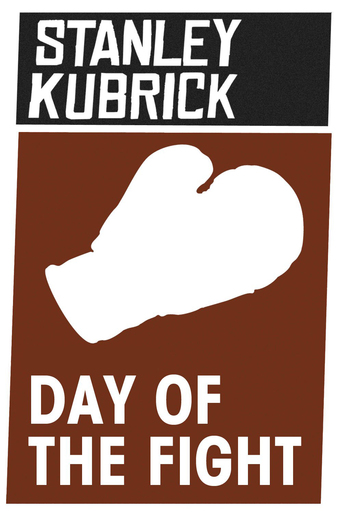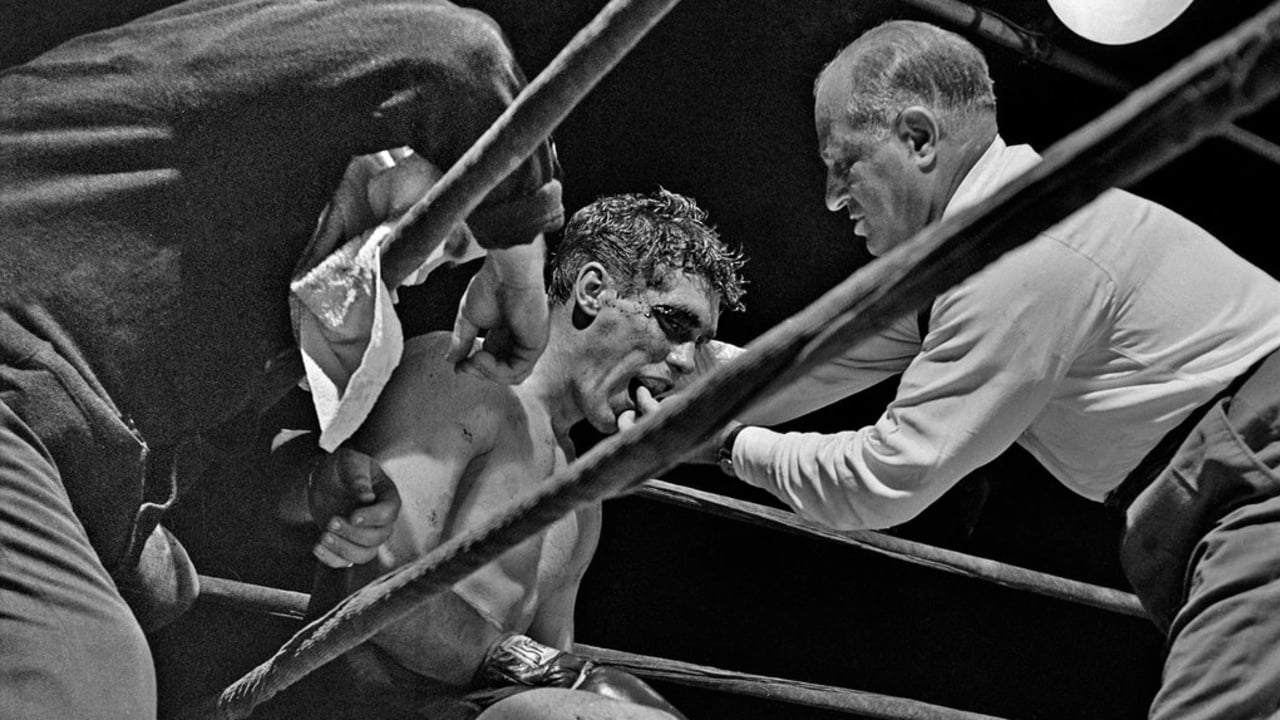darrenyaates
This is an early short film made by the legendary Stanley Kubrick and you can already see the talent here. Its entire duration is devoted to a boxer as he prepares for the big day- his boxing match. Featuring some camera angles and techniques that became a staple in his later films Day of the fight should be a great film for students to watch as they understand one of the greatest filmmakers of the 21st century try his hands at a movie camera at the very beginning of a glorious career.
harrsh85
i had this movie for many months in my pc, i am die hard fan of stanley kubrick and i am always fascinated by him but something really not interested me to watch this movie mainly because of the bad print i had, recently my pc got overloaded with lot of storage so i was going through files so that i can delete and maintain freespace so in that kind of situation i saw this movie, i was amazed by the way it was made by that time; that too with that kind of budget, since i want to delete i watched it again, now i am in dilemma whether to keep it or delete it because i feel multiple viewings will help me a great deal in my profession bec i too come from same profession, i think you understand how good it is.we can clearly understand that the filmmaker wanted to explore the details about boxing for which he cleverly used point of view method bec only the persons involved immersely in something will know the pros and cons of that thing so it is a clever move to go that way.this is a docu drama but at the same time the central character is the real person as depicted. the detailing and the way they shot was mindblowing but it will be exciting only when you see from that point of time where film-making is a difficult task.the style of this film is very similar to stanley kubrick's another film called the killing which released after this movie like in the voice of the commentator, lighting, camera angles, music, etc.., this is not a positive movie about boxing and at the same time it is not negative too, this is a truthful movie about boxing and boxers.there are chances that this movie can be a great influence with martin scorsese for his film raging bull, even though that is a true story as this is too, film-making might have influenced from this movie but if that is true you must understand what a great thing it is to get influenced for 70's movie from 50's movie; that is stanley kubrick.
José Luis Rivera Mendoza (jluis1984)
In 1950, legendary director Stanley Kubrick was a young photographer who was beginning to be fascinated by the many films he discovered in his visits to the screenings done by the Museum of Modern Art and other cinemas of New York. The discovery of such a wide range of different films made a big impact on the talented "Look" magazine photographer, who began to experiment with the medium, heavily influenced by the fluid movement that was the trademark of director Max Ophüls' work. It was that very same year when Kubrick would have his first chance to make a movie, as his friend Alexander Singer persuaded him to make a short documentary that he could sell to a distributor of cinema newsreels. Kubrick accepted the proposal, and inspired by an article he had done for "Look", he began working on his first movie. That early film would be "Day of the Fight"."Day of the Fight" is a short documentary that chronicles a day in the life of Irish middleweight boxer Walter Cartier, a very promising fighter who is about to face an important contender, Bobby James, on that very same day. However, before focusing on Cartier, the movie makes a short yet informative description of boxing, its history, and its fanatics; everything with the precise and direct narration by veteran newsman Douglas Edwards. After that brief introduction, the movie follows Cartier from early in the morning until the fight, which takes place at 10:00 pm. Through the day, we follow Walter Cartier and his identical twin brother Vincent (who is also a lawyer and Walter's manager) in their preparation for the fight, starting with a good breakfast and early mass, and the subsequent mental and physical preparation that Walter makes in order to become a fighting machine.While the idea of the film was entirely Kubrick's, the screenplay for the narration was entirely the work of Robert Rein, who follows the typical style of narrative that had been prevalent during the 40s weekly newsreels of "The March of Time", as in fact, that company was the originally planned buyer of "Day of Fight. However, since the company went out of business that very same year, the movie was then sold to RKO Pictures, who under the RKO-Pathé brand, became the movie's distributor. Anyways, as written above, Rein's script follows the classic conventions of the newsreels of its time, mixing the educational purposes of the documentary with a heavy use of melodramatics in the voice-over's narrative. However, credit must go to Rein for making a very realistic, albeit sentimentalist, description of the boxers' life.If the voice-over of "Day of the Fight" sounds archaic and outdated to us these days, Kubrick's direction of the film looks the opposite as while still limited to its medium's restriction, the young director managed to create a vibrant film thanks to his very fluid and dynamic use of camera-work. While the movie is still a documentary bounded by its obligatory narration, Kubrick uses his camera to create a character out of the real persona of Walter Cartier, and while the boxer has no lines in the movie, a lot of him can be known thanks to the images Kubrick's camera has captured of him. As the moment of the fight gets closer, Kubrick accelerates the pace, truly increasing the tension and giving the story a real feeling of suspense as the fight begins. The images from the fight are remarkably edited and the result is one of the best scenes of a sports documentary.While the screenplay is definitely typical of newsreels, Douglas Edwards' narration gives it a slightly different edge, as he manages to put the perfect emotion on what he is saying. No doubt thanks to his many years as a sports newsman, Edwards gives his words an impact and presence that makes the movie real, as if one was there with Cartier training for the big day. True, it's still an outdated style of narration, but Edwards' style makes it enjoyable. The rest of the people who appears on film has no lines, while we follow the Cartier brothers in their day, everything is narrated by Edwards and there is no interview with the contenders. However, it's safe to say that in this movie Walter projects a lot of presence and so it's not a surprise that after his career as a boxer he had decided to become an actor (landing a small, yet memorable role in "The Phil Silvers Show").Considering the magnitude and importance of Stanley Kubrick's career, it's very easy to dismiss this movie as part of his career; however, unlike his second work ("The Flying Padre"), there are many things in this movie that makes it interesting and showcase early bits of what would become the Kubrick's style. Sure, it has every flaw a newsreel could have (including the typical use of staged scenes), but it also feels different, as Kubrick's eye for photography gave it a new look (Certainly, Gerald Fried's music also helped on this). A short newsreel like "Day of the Fight" may not be the most impressive debut for a legendary filmmaker, but in all its humility, this little short represents the beginning of a Master's career, and that's enough reason to give it a chance. Kubrick fans, this is a must. 7/10
clconway
Viewers should be warned this is a newsreel-style documentary, not a fiction film -- it certainly doesn't stand comparison to Kubrick's mature work. There is no sync sound, only narration (in a booming newsreel voice) and post-looped sound effects. Fans of Kubrick will see some hints of his style in the cinematography -- a shot of Cartier riding in his convertible comes to mind -- but not much else. The narration gets overheated at times (it often pauses to reflect on "the waiting, the terrible waiting") and the "story" doesn't amount to much (it is a "day in the life" piece). The print I saw lacked the "first part" mentioned by the other reviewer, the part about the fans and the fight industry; it was only about ten minutes and follow Cartier from the time he wakes up and goes to church to after the fight. The fight footage will remind you of contemporary HBO coverage, since it was shot live from the floor of the arena, and Kubrick doesn't juice it up with any whipping, cracking, crunching or grunting sound effects. Overall, I thought this was an interesting picture, but I wouldn't urge anyone to go out of his way to see it, unless you are a Kubrick completist.


 AD
AD


